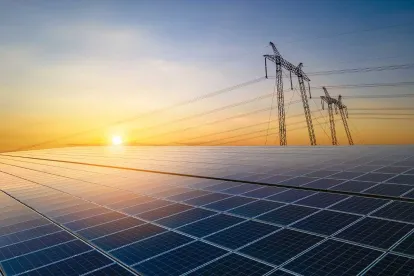On July 27, 2022, Senator Joe Manchin and Senate Majority Leader Chuck Schumer reached an agreement on a budget reconciliation bill and released the “Inflation Reduction Act of 2022” (the “Act”). A significant part of the Act focuses on energy tax changes aimed at fighting climate change and promoting domestic energy security. To those ends, the Act extends and expands existing tax credits and adds several new energy tax credits for clean energy projects. The benefits of this historic legislation for investors and developers in the clean energy infrastructure space cannot be overstated.
Here are key highlights.1
-
Extension of the production tax credit under I.R.C. Section 45 (the “PTC”)2 for eligible wind, solar, geothermal, biomass, hydropower, municipal waste, and marine and hydrokinetic projects that start construction before January 1, 2025. The extension includes a renewal of the PTC for solar, which had previously expired.
-
Extension of the Section 48 energy investment tax credit (the “ITC”) for solar, combined heat and power, qualified fuel cell, microturbine, waste energy, small wind, biogas, storage technology, and microgrid controllers projects that start construction before January 1, 2025.
-
For geothermal, the Act extends the ITC for projects that start construction before January 1, 2035.
-
Significantly, the Act makes stand-alone storage eligible for the ITC. The inclusion of biogas and microgrid controllers as ITC-eligible property is also new. Further, for installations of energy property with a maximum net output not greater than 5 megawatts, the Act permits the ITC-eligible basis to include certain expenditures on upgrades to a utility’s interconnection system.
-
Subject to a new two-tier rate structure (discussed below), the Act restores the full ITC rate of 30 percent and full PTC rate of 1.5 cents per kWh (subject to inflationary adjustments).
-
The Act, in effect, extends the ITC and PTC at full rates under new tax credits available for electricity produced by zero-emissions projects placed in service in 2025 or later, which start construction before 2033.
-
Extension of the Section 45Q carbon capture credit for projects that start construction before January 1, 2033. In addition, the Act reduces the minimum carbon capture requirement and includes an enhanced credit for certain direct air capture facilities.
-
The Act adds a new production tax credit for clean hydrogen produced after December 31, 2022 at a qualifying facility that starts construction before January 1, 2033. Taxpayers also have the option to elect to claim the ITC in lieu of the new production tax credit.
-
The Act adds a new tax credit (the Advanced Manufacturing Production Credit) to incentivize domestic production and sale of components used in solar, wind, and storage projects (e.g., solar modules, solar-grade polysilicon, inverters, battery cells, blades, and towers) and critical minerals.
-
The Act expands the Section 48C credit to include facilities that equip or expand certain manufacturing facilities in the clean energy sector.
-
The Act also includes new tax credits for zero-emissions nuclear power production and transportation fuels with lower emissions rates.
-
Under a new two-tier rate structure, the Act only permits projects that satisfy prevailing wage and apprenticeship requirements to claim the full credit. Otherwise, the credit rate is 20 percent of the full rate. For example, if an eligible solar project does not satisfy the requirements, the ITC rate would be 6 percent rather than 30 percent. The full rate applies until 60 days after the Secretary publishes regulations. This rate structure applies to the ITC, PTC, and most other energy tax credits.
-
The Act makes available a 10 percent bonus credit when domestic content requirements are satisfied. In some cases, the Act provides a separate 10 percent bonus credit for qualifying facilities located in enhanced energy or low-income communities.
-
Other positive changes for promoting clean energy include (i) transferability of most energy tax credits; (ii) a direct pay option generally available only to governmental agencies and certain other tax-exempt entities; and (iii) a 3-year carryback period for energy credits.
The Senate is expected to vote on the Act during the first week in August, just before its scheduled August recess. If passed by the Senate, the legislation would then go to the House for approval. The House is currently in recess.
FOOTNOTES
1 These highlights do not address any tax incentives for individuals, residential properties, agriculture, or electric vehicles and charging stations.
2 Unless otherwise stated, all capitalized Section references are to the Internal Revenue Code of 1986, as amended.




 />i
/>i
